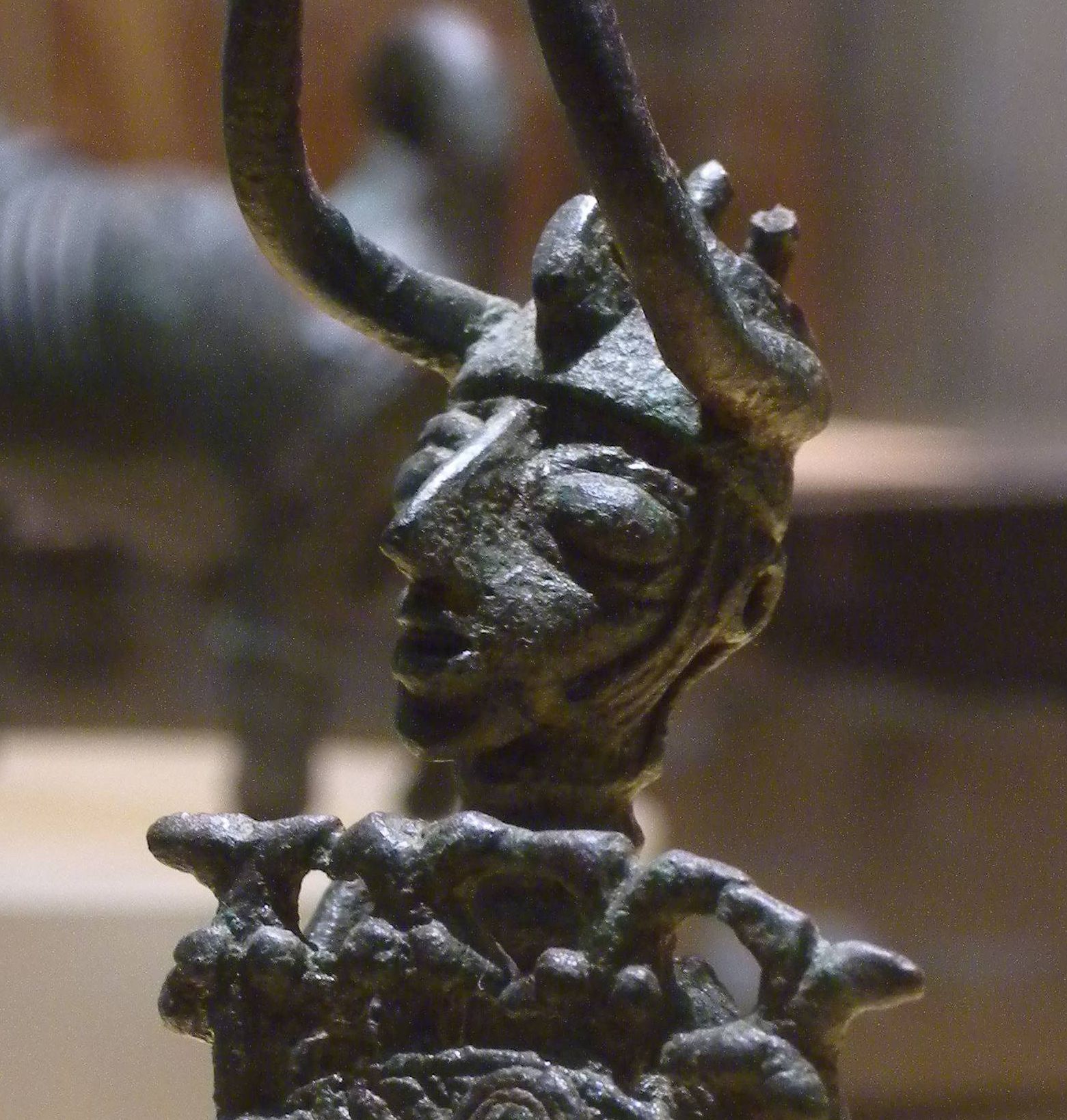Nuragic bronze statuettes on:
[Wikipedia]
[Google]
[Amazon]

 The Nuragic bronze statuettes (''bronzetti'' in
The Nuragic bronze statuettes (''bronzetti'' in
File:Bronzetto nuragico Sulcis.jpg, Nuragic warrior from Sulcis ( Pigorini National Museum of Prehistory and Ethnography, Rome)
File:Bronzetti nuragici al museo Archeologico di Cagliari.jpg, Some Nuragic statuettes on display at the National Archaeological Museum of Cagliari (Sardinia)
File:Bronzetto Nuragico 21.JPG, Nuragic bronze statuette nicknamed "the mother of the killed" found in Urzulei
File:BRONZETTO-BIS.jpg, Nuragic statuette found in the Etruscan city of

 The Nuragic bronze statuettes (''bronzetti'' in
The Nuragic bronze statuettes (''bronzetti'' in Italian
Italian(s) may refer to:
* Anything of, from, or related to the people of Italy over the centuries
** Italians, an ethnic group or simply a citizen of the Italian Republic or Italian Kingdom
** Italian language, a Romance language
*** Regional Ita ...
, ''brunzitos'' or ''brunzitus'' in Sardinian) are typical Nuragic Sardinia
Sardinia ( ; it, Sardegna, label=Italian, Corsican and Tabarchino ; sc, Sardigna , sdc, Sardhigna; french: Sardaigne; sdn, Saldigna; ca, Sardenya, label=Algherese and Catalan) is the second-largest island in the Mediterranean Sea, after ...
n bronze sculptures of the final phase of the Bronze Age
The Bronze Age is a historic period, lasting approximately from 3300 BC to 1200 BC, characterized by the use of bronze, the presence of writing in some areas, and other early features of urban civilization. The Bronze Age is the second prin ...
and the early Iron Age
The Iron Age is the final epoch of the three-age division of the prehistory and protohistory of humanity. It was preceded by the Stone Age ( Paleolithic, Mesolithic, Neolithic) and the Bronze Age ( Chalcolithic). The concept has been mostl ...
.
During the archaeological excavations in Sardinia, more than 500 bronze statuettes of this type have been discovered, mainly in places of worship like their holy wells, and the so-called megara temples, but also in villages and nuraghe
The nuraghe (, ; plural: Logudorese Sardinian , Campidanese Sardinian , Italian ), or also nurhag in English, is the main type of ancient megalithic edifice found in Sardinia, developed during the Nuragic Age between 1900 and 730 B.C. ...
s. Several statues were also found in excavations carried out in Etruscan tombs of central Italy
Central Italy ( it, Italia centrale or just ) is one of the five official statistical regions of Italy used by the National Institute of Statistics (ISTAT), a first-level NUTS region, and a European Parliament constituency.
Regions
Central I ...
from the 9th-8th centuries .
Probably obtained with the lost wax technique, they can measure up to 39 cm. They represent scenes of everyday life of the nuragic people, depicting characters from various social classes, animal figures, warriors, chiefs, divinities, everyday objects and ships.
Archaeologists have not been able yet to date the figures accurately: They were allegedly made between the 9th~6th centuries ; however, the recent discoveries at Orroli and at Ballao of fragments of bronze statues dating from the 13th century BCE have called into question their effective date. Gonzalez (2012) dated the earliest types of bronze statuettes to the 12th-11th centuries .
Gallery
Vulci
Vulci or Volci ( Etruscan: ''Velch'' or ''Velx'', depending on the romanization used) was a rich Etruscan city in what is now northern Lazio, central Italy.
As George Dennis wrote, "Vulci is a city whose very name... was scarcely remembered, b ...
.
File:Bronz.sardo.JPG, Nuragic bronze statuette showing an archer with a kilt from Sardara
File:Bronzetto sardo 2.JPG, A Sardinian archer from Sardara
File:Bronzetto 20.JPG, A Sardinian archer from the Nuragic Sanctuary of Abini in Teti
File:Civiltà nuragica, prima età del ferro, bronzetti dal santuario di albini-teti (NU), grande demone a quattro occhi, quattro braccia e due scudi 02.jpg, Sardinian four-eyed and four-legged hero from the Nuragic Sanctuary of Abini
File:Bronzetto sardo 10.JPG, Sardinian chieftain from Serri
File:Bronzetto nuragico con navicella votiva con testa bovina, da nuraghe scale de boes (ardara).JPG, Ship model from Ardara
Citations
Bibliography
* * * * * {{refend Archaeology of Sardinia Sardinia